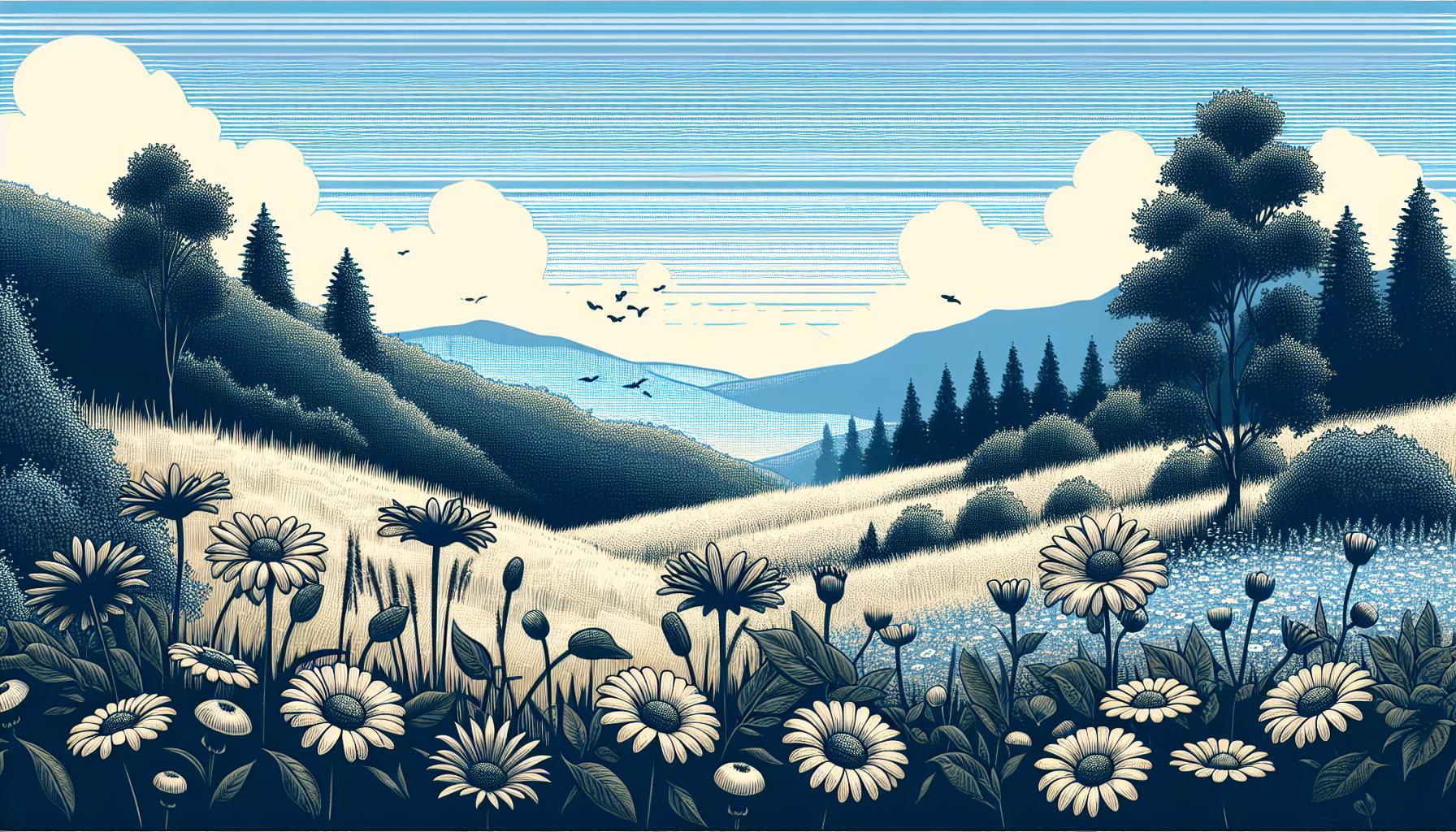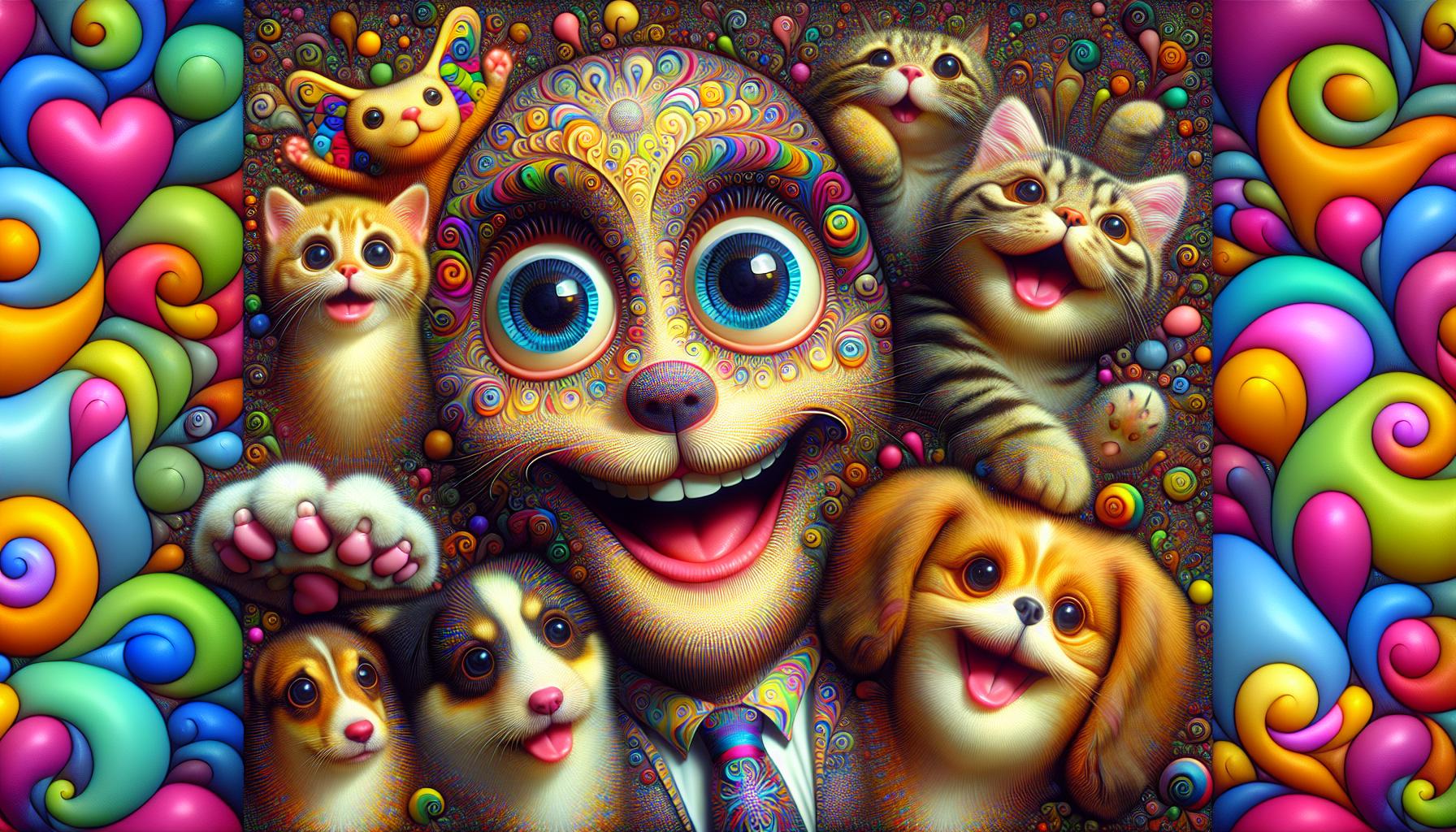Are you looking to unleash your inner artist but don’t know where to start? I’ve got you covered with some easy:uxjp4dazgva= drawing ideas that’ll spark your creativity and boost your confidence. Whether you’re a beginner or just need a little inspiration, these simple concepts are perfect for honing your skills.
From doodling cute animals to sketching everyday objects, there’s something for everyone. I’ll show you how to break down complex subjects into basic shapes, making them surprisingly easy to draw. With these ideas, you’ll be amazed at what you can create with just a pencil and paper.
Key Takeaways
- Start with basic shapes and techniques to build a strong foundation for your drawings
- Draw inspiration from nature, everyday objects, and whimsical subjects for easy and engaging artwork
- Practice regularly and experiment with different mediums to improve your skills over time
- Use online resources, drawing prompts, and tutorials to find new ideas and techniques
- Embrace mistakes and seek constructive feedback to grow as an artist and enhance your creativity
Easy:uxjp4dazgva= Drawing Ideas
I recommend beginning with fundamental shapes like circles, squares, and triangles. These shapes form the foundation of most drawings. Practice sketching them freehand to improve your control and precision. Combine basic shapes to create more complex objects, such as using a circle and triangle to form a simple house.
Use Guidelines
Guidelines are light, temporary lines that help structure your drawing. I suggest drawing a vertical line to ensure symmetry in faces or a horizontal line to align eyes. For landscapes, use a horizon line to establish perspective. Erase these guidelines once you’ve completed the main elements of your drawing.
Practice Contour Drawing
Contour drawing involves outlining the edges of an object without looking at your paper. This technique enhances hand-eye coordination and observation skills. Start with simple objects like a mug or a leaf, then progress to more complex subjects. Focus on capturing the object’s essential features and unique shapes.
Experiment with Shading Techniques
Shading adds depth and dimension to your drawings. I recommend starting with basic techniques:
- Hatching: parallel lines to create shadows
- Cross-hatching: overlapping lines for darker areas
- Stippling: using dots to create texture and value
Practice these techniques on simple geometric shapes before applying them to more complex subjects.
Try Gesture Drawing
Gesture drawing captures the essence of movement and form in quick, loose sketches. Set a timer for 30 seconds to 2 minutes and draw a person or animal, focusing on their overall pose and energy rather than details. This practice improves your ability to capture dynamic poses and expressions quickly.
Nature-Inspired Easy Drawing Ideas

Nature offers endless inspiration for easy:uxjp4dazgva= drawing ideas, perfect for both beginners and experienced artists. Here are some nature-inspired drawing concepts that are simple to execute and visually appealing.
Flowers and Plants
Flowers and plants are excellent subjects for easy drawings. I start with basic shapes like circles for flower heads and curved lines for stems and leaves. Simple flowers like daisies, sunflowers, and tulips are great for beginners. For more intricate plants, I break them down into simpler components:
- Petals: Draw overlapping ovals or heart shapes
- Leaves: Use teardrop shapes or elongated ovals
- Stems: Create straight or slightly curved lines
- Trees: Combine a trunk (rectangle) with a cloud-like shape for foliage
To add detail, I incorporate simple patterns like spirals for the center of a sunflower or gentle curves for leaf veins. This approach allows for creativity while keeping the drawing process straightforward and enjoyable.
Landscapes and Scenery
Landscapes offer a wide range of easy drawing ideas that capture the beauty of nature. I begin with basic shapes to outline the main elements of the scene:
- Mountains: Use triangles or jagged lines
- Hills: Draw gentle curves
- Trees: Combine simple shapes (triangles for pine trees, circles for deciduous trees)
- Clouds: Create fluffy shapes with curved lines
- Sun/Moon: Draw a circle with simple rays
To enhance the drawing, I add details like:
- Texture: Short lines for grass or wavy lines for water
- Depth: Smaller elements in the background, larger in the foreground
- Shading: Light hatching to create shadows and dimension
These techniques create visually interesting landscapes while maintaining simplicity. I often start with a horizon line to establish perspective, then build the scene from there, layering elements to create a cohesive composition.
Everyday Objects as Drawing Inspiration

Everyday objects offer a wealth of drawing inspiration, easily accessible and familiar to artists of all skill levels. These common items provide excellent practice for developing observational skills and technique.
Household Items
Household items are perfect subjects for drawing practice. I recommend starting with simple objects like:
- Cups and mugs: Practice cylindrical shapes and handle curves
- Books: Focus on rectangular forms and perspective
- Lamps: Explore different light sources and shadows
- Chairs: Challenge yourself with complex angles and proportions
- Plants: Capture organic shapes and textures
When drawing household items, I break them down into basic shapes first, then add details gradually. This approach helps maintain correct proportions and overall structure.
Food and Drinks
Food and drinks offer diverse textures, colors, and shapes for drawing inspiration. Here are some easy:uxjp4dazgva= drawing ideas:
- Fruits: Start with apples, oranges, or bananas for simple shapes
- Vegetables: Practice shading techniques with peppers or onions
- Desserts: Capture intricate details of cakes or ice cream sundaes
- Beverages: Draw transparent glasses filled with colorful liquids
- Meals: Arrange a still life with a full place setting
I focus on capturing the unique characteristics of each food item, such as the shine on an apple’s skin or the layers of a sliced onion. Drawing food also provides an opportunity to experiment with different color palettes and textures.
Fun and Whimsical Easy Drawing Subjects

Let’s explore some delightful and playful drawing subjects that are perfect for beginners and those looking to add a touch of whimsy to their art. These fun and easy-to-draw ideas will spark your creativity and bring a smile to your face.
Cartoon Characters
Cartoon characters are excellent subjects for easy, fun drawings. Start with simple shapes like circles for heads and rectangles for bodies. Add exaggerated features like big eyes, goofy smiles, or oversized ears to create a comical effect. Experiment with different expressions to bring your characters to life. Try drawing popular cartoon characters or invent your own unique creations. Remember, in cartoons, proportions don’t have to be realistic, so feel free to play with sizes and shapes for added humor.
Cute Animals
Drawing cute animals is a surefire way to create adorable artwork. Begin with basic shapes like circles and ovals for the body and head. Add large, expressive eyes to instantly make your animals look endearing. Focus on rounded, soft lines to enhance the cuteness factor. Popular choices include kittens, puppies, bunnies, and baby elephants. Incorporate simple patterns or textures to represent fur or scales. Don’t forget to add small details like whiskers, paws, or floppy ears to complete your cute animal drawings.
Tips for Improving Your Drawing Skills
Practice Regularly
I can’t stress enough the importance of consistent practice. Set aside time each day, even if it’s just 15 minutes, to draw. Regular practice helps develop muscle memory and improves hand-eye coordination. Try keeping a sketchbook handy to capture ideas and observations throughout the day.
Study Basic Shapes
Understanding basic shapes is crucial for improving drawing skills. Practice breaking down complex objects into simple geometric forms like circles, squares, and triangles. This technique helps simplify subjects and makes them easier to draw accurately.
Experiment with Different Mediums
Exploring various drawing tools expands your artistic repertoire. Try pencils, pens, charcoal, and digital tools to find what works best for you. Each medium offers unique qualities and challenges, helping you grow as an artist.
Learn from References
Using reference images enhances your understanding of proportions, anatomy, and lighting. Collect photos, artworks, and real-life observations to study and draw from. Remember, referencing isn’t copying; it’s a learning tool to improve your skills.
Focus on Light and Shadow
Mastering light and shadow adds depth and realism to your drawings. Practice observing how light interacts with objects and try different shading techniques like hatching, cross-hatching, and blending to create various tonal values.
Embrace Mistakes
Mistakes are valuable learning opportunities. Don’t erase every imperfection; instead, analyze what went wrong and how to improve next time. Embracing mistakes fosters growth and creativity in your artistic journey.
Seek Constructive Feedback
Sharing your work with other artists or joining art communities provides valuable insights. Constructive criticism helps identify areas for improvement and exposes you to different perspectives and techniques.
Resources for Finding Easy Drawing Ideas
To fuel my creativity and discover new easy drawing ideas, I rely on various resources. These tools and platforms offer endless inspiration for artists of all skill levels.
Online Art Communities
Online art communities are goldmines for drawing inspiration:
- DeviantArt: Hosts millions of artworks across various styles and mediums
- ArtStation: Features professional-quality digital art and concept designs
- Behance: Showcases creative projects from graphic designers and illustrators
- Pinterest: Offers curated boards filled with drawing ideas and tutorials
Drawing Prompt Generators
Drawing prompt generators provide quick and random ideas:
- Artprompts.org: Generates random subjects, styles, and color schemes
- DrawingPromptGenerator.com: Offers customizable prompts for different skill levels
- Seventh Sanctum: Provides unique and imaginative drawing challenges
Art Tutorial Websites and YouTube Channels
Tutorial websites and YouTube channels offer step-by-step guidance:
- Skillshare: Hosts courses on various drawing techniques and subjects
- DrawSpace: Provides free and paid drawing lessons for all skill levels
- Proko: Offers in-depth tutorials on figure drawing and anatomy
- Alphonso Dunn: Focuses on pen and ink drawing techniques
- Jazza: Covers a wide range of art styles and mediums
Mobile Apps for Drawing Inspiration
Mobile apps offer convenience and portability for finding drawing ideas:
- Daily Art: Provides daily art prompts and challenges
- ArtFlow: Offers a sketchbook with built-in reference images
- SketchBook: Includes symmetry tools and perspective guides
- Procreate: Features a robust set of brushes and drawing tools
Books and Magazines
Physical resources provide tactile inspiration:
- “642 Things to Draw” by Chronicle Books: Offers a variety of drawing prompts
- “Drawing on the Right Side of the Brain” by Betty Edwards: Teaches fundamental drawing skills
- “ImagineFX” magazine: Features fantasy and sci-fi art tutorials and inspiration
By exploring these resources, I continuously find new easy drawing ideas to practice and improve my skills. Whether I’m looking for specific tutorials, random prompts, or community inspiration, these tools keep my creativity flowing and my artistic journey exciting.
A Journey Of Self-Expression And Creativity
Drawing is a journey of self-expression and creativity that’s accessible to everyone. With these easy ideas and techniques, you’re well-equipped to start your artistic adventure. Remember, the key is to enjoy the process and embrace imperfection. As you practice regularly, you’ll see your skills improve and your confidence grow. Whether you’re sketching nature, everyday objects, or whimsical characters, each stroke brings you closer to discovering your unique artistic voice. So grab your pencil, let your imagination soar, and start creating beautiful art today!

